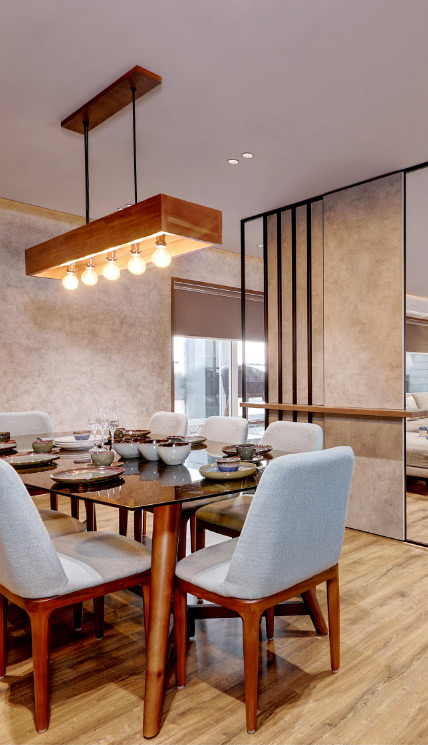Exclusive interior design firms specialize in high-end transformations.
Exclusive interior design firms specialize in high-end transformations.
Blog Article
Change Your Home With Crucial Concepts of Interior Decoration and Visual Appeals
By comprehending the effect of color theory and the value of structure and patterns, one can create spaces that are not just aesthetically enticing however additionally deeply individual. Attaining this balance includes more than plain design; it encompasses a calculated plan and a keen understanding of how each component interacts within a room.
Comprehending Color Concept
Comprehending the concepts of shade concept permits designers to create areas that resonate psychologically with passengers while meeting functional needs. Each classification plays a crucial function in establishing harmony within a space.
The psychological influence of colors is profound; cozy colors such as reds and oranges stimulate energy and warmth, while cool tones like blues and environment-friendlies advertise peace and tranquility. The use of corresponding shades improves aesthetic rate of interest, developing striking contrasts that can raise a space's appeal.
Neutral shades, on the other hand, serve as a versatile backdrop, permitting various other style elements to beam. It is necessary to think about factors such as lights and the area's purpose when picking a shade palette, as these can alter the perception of shades throughout the day.
Ultimately, a well-considered shade system can change an area, cultivating a sense of convenience and style that aligns with the residents' preferences. Proficiency of shade concept is, as a result, an essential skill for any kind of interior designer intending to create unified and welcoming atmospheres.
Attaining Equilibrium in Layout
Exactly how can developers accomplish a feeling of stability in their areas? Accomplishing balance in layout is essential to producing harmonious interiors.
Asymmetrical equilibrium, on the other hand, depends on differing components that still accomplish a natural appearance. This approach enables more dynamic and casual arrangements, supplying rate of interest while keeping equilibrium. By carefully choosing differing dimensions, shades, and textures, designers can create an aesthetically compelling area that really feels balanced yet energetic.
Radial equilibrium emphasizes a central prime focus with components emitting outward. This design is typically seen in round designs, where furniture and style create a natural surround that attracts the eye inward.
Inevitably, accomplishing balance requires thoughtful factor to consider of scale, proportion, and the relationships in between components. interior design firms. By skillfully using these equilibrium concepts, designers can change rooms right into environments that feel both cosmetically pleasing and functionally unified, enhancing the general experience for passengers
Significance of Spatial Understanding

An eager sense of spatial awareness enables developers to identify focal points within a space, directing the audience's focus to crucial features while preserving a total feeling of unity. It also assists in the tactical positioning of lighting, which can substantially influence the assumption of space and state of mind. Furthermore, comprehending spatial partnerships allows the designer to deal with the details requirements of inhabitants, making sure that each location offers its desired function without jeopardizing aesthetic appeals.
Inevitably, spatial understanding is essential for optimizing the potential of any type of interior room. By carefully thinking about the interaction in between measurements, design, and function, developers can create settings that not only satisfy useful needs however additionally evoke a feeling of convenience and appeal, boosting the total living experience.
Integrating Structure and Patterns
Welcoming a varied variety of textures and patterns can considerably boost the visual and responsive appeal of an interior space. The strategic use various materials-- such as timber, metal, fabric, and rock-- creates depth and interest, making a room really feel extra welcoming and look these up dynamic. For circumstances, combining smooth surface areas with rough structures can develop a balance that draws the eye and involves the senses.
When incorporating patterns, think about both scale and repetition. Huge patterns can act as focal factors, while smaller sized, subtle designs can complement various other elements without frustrating the room. Layering patterns, such as pairing floral cushions with striped throws, adds complexity and a feeling of harmony if performed attentively.
It is also vital to preserve a natural color palette, making certain that structures and patterns function together instead than contend for attention. By picking a few crucial structures and patterns, you can create an unified aesthetic that reflects your personal style while boosting the total ambiance of the room. Inevitably, the cautious consolidation of these components can change a mundane room right into an innovative atmosphere rich with character and heat.
Customizing Your Space
Developing a space that reflects your individuality is important to achieving a truly inviting atmosphere. Personalization in interior decoration allows you to infuse your distinct style and rate of interests into your home, transforming it from a mere shelter right into a shelter that speaks to who you are. Begin by picking a color palette that reverberates with your feelings-- bold tones can stimulate, while soft tones use tranquility.
Incorporate artwork and decoration that reflect your passions, whether it be traveling, nature, or abstract concepts. Presenting personal collections, such as books, pictures, or keepsakes, can stimulate valued memories and create prime focus within a room. Furthermore, take into consideration personalizing useful items, like upholstered furniture, to line up with your aesthetic preferences.

Final Thought
Finally, the transformation of a home via the important concepts of interior pop over here layout and looks necessitates a comprehensive understanding of color concept, balance, spatial awareness, appearance, and personalization. Each aspect adds dramatically to developing a harmonious and functional living environment - interior design firms. By thoughtfully incorporating these concepts, individuals can improve the aesthetic allure and emotional vibration of their rooms, eventually promoting a home that shows unique identities while giving comfort and functionality
Report this page